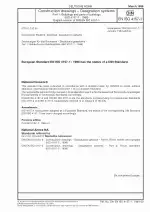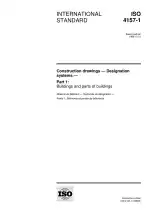Data Structures for Electronic Product Catalogues for Building Services - Part 2: Geometry
Also Known As:
ISO 16757-2:2016 standard provides a framework for modeling building services product geometry in electronic product catalogues. The standard focuses on optimizing the exchange of data and includes shapes for representing the product itself, symbolic shapes for visualizing the product's function in schematic diagrams, spaces for functional requirements, surfaces for visualization, and ports to represent connectivity between different objects.
The geometry is expressed using Constructive Solid Geometry (CSG) based on geometric primitives. ISO 16757-2:2016 utilizes relevant primitives from ISO 10303-42 and ISO 16739, while also adding primitives specific to the unique geometry of building services products. Line elements are also used for symbolic shapes.
The standard does not describe the inner structure, internal functionality, or manufacturing information of the product, as these details are typically not published in a product catalogue.
To manage the exchange of large amounts of variant dimensions, a parametric model is introduced. This model allows for the derivation of variant-specific geometries from a generic model, reducing the data to be exchanged and resulting in smaller data files for easier transmission during data exchanges.
It is important to note that the geometry model specified by ISO 16757-2:2016 does not include any drawing information such as views, line styles, or hatching.
| Edition | 1 |
| ICS Codes | 91.010.01 - Construction industry in general |
| Language(s) | English |
| File Size | 1.8 MB |








